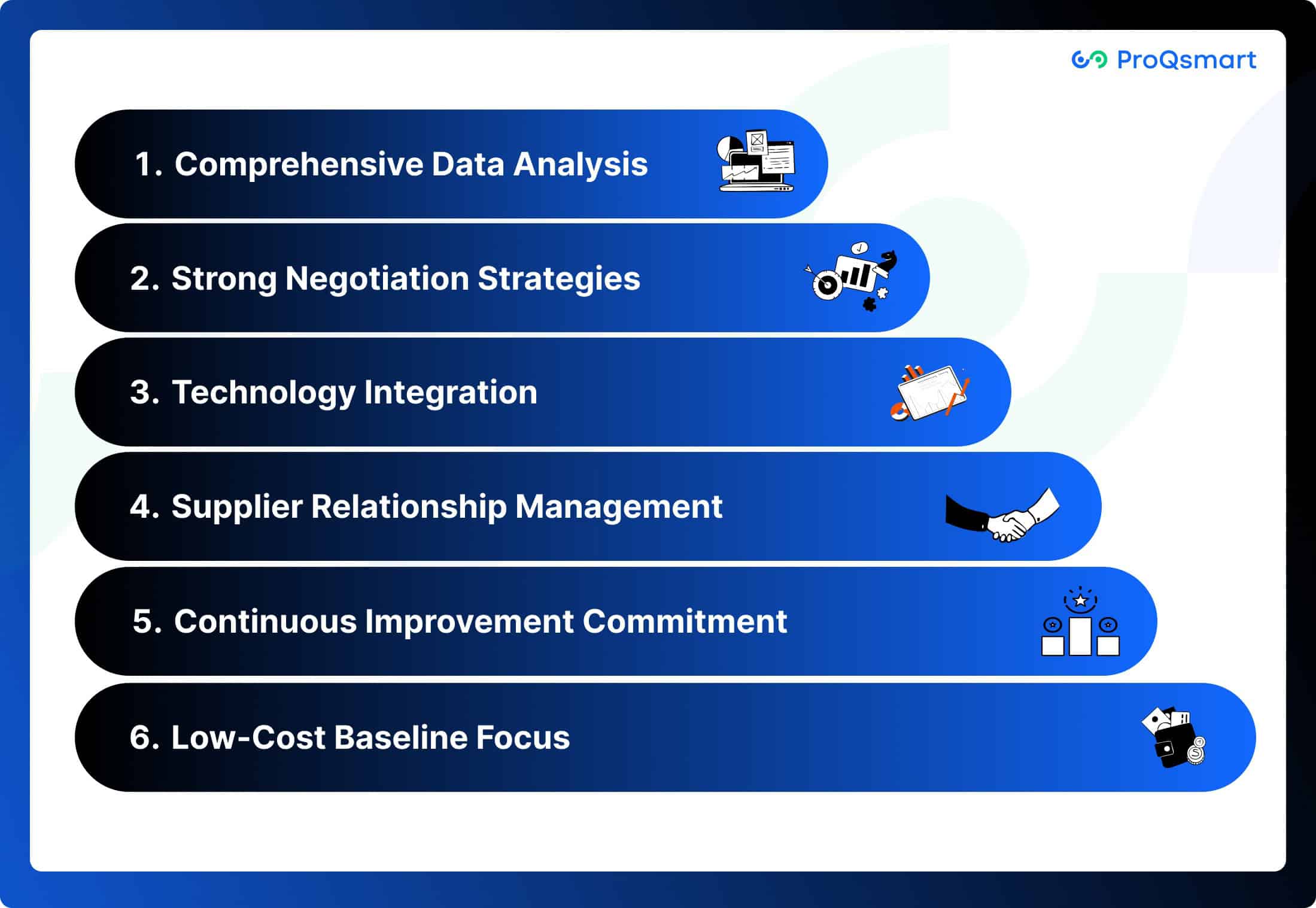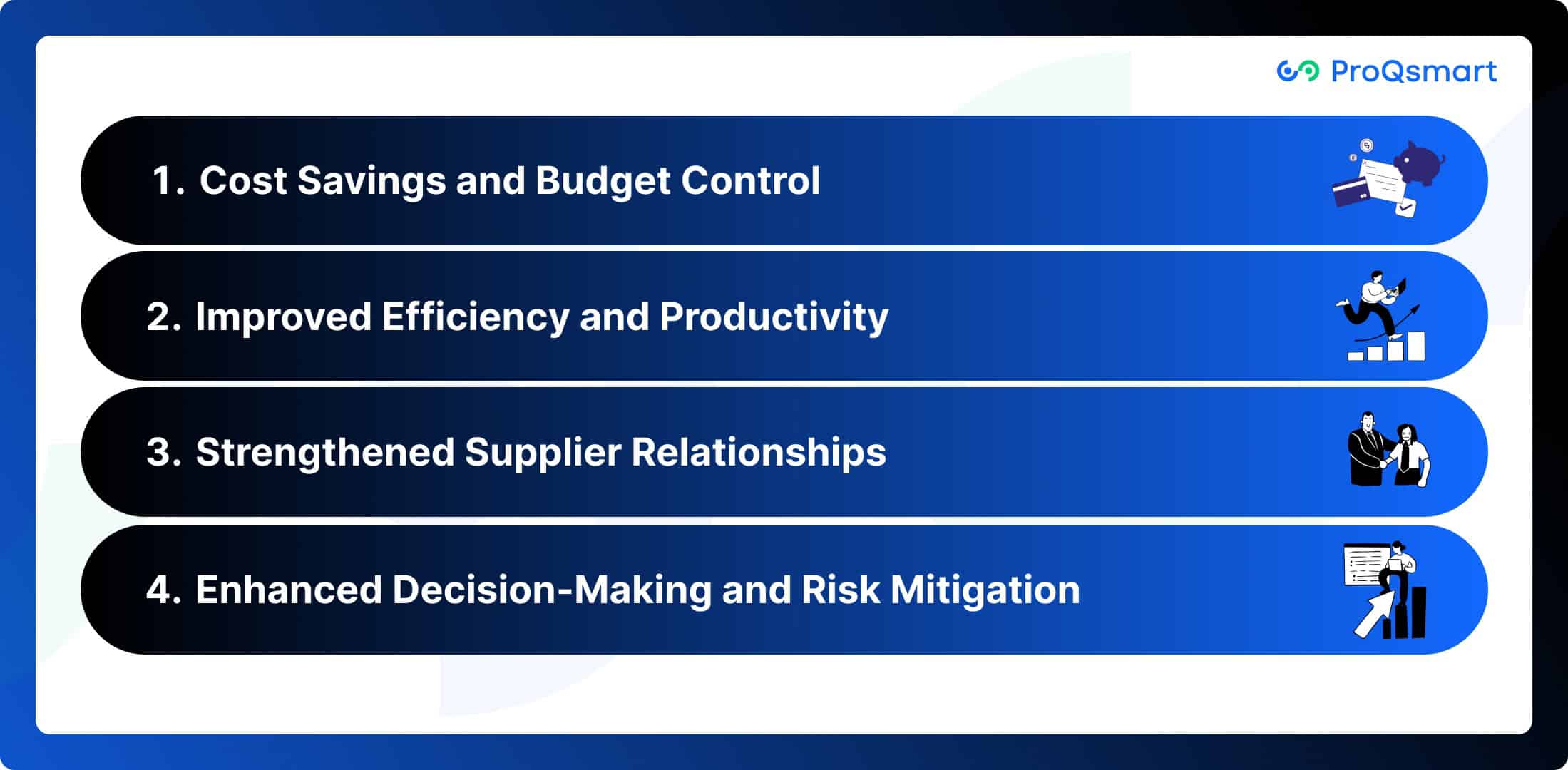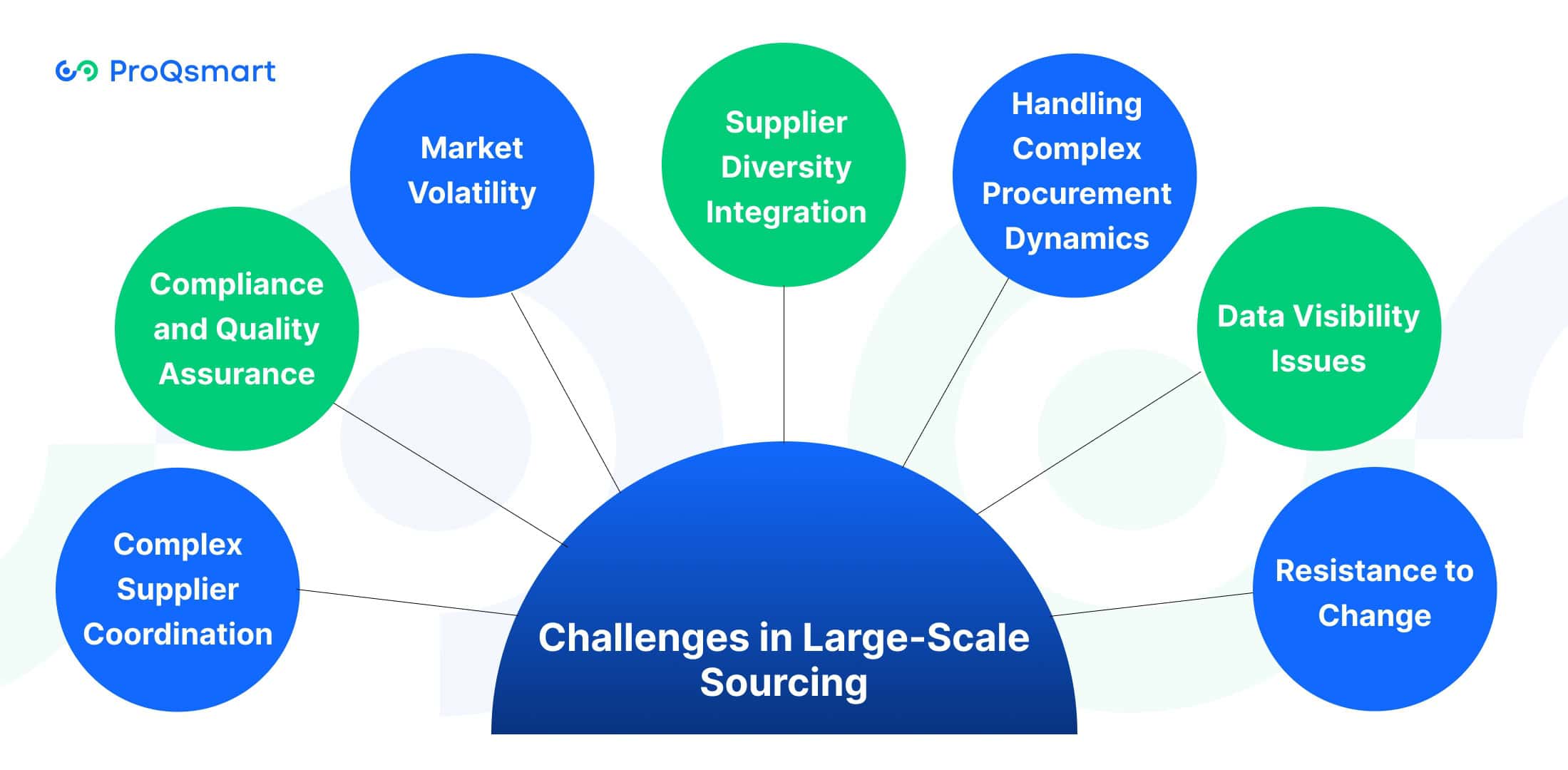Sourcing optimization is central to increasing efficiency and savings across procurement functions. It emphasizes smartening up supplier selection, enhancing contract terms, and maximizing purchasing operations to further corporate objectives. Through the study of data and market trends, sourcing experts can uncover opportunities to lower costs and improve supplier performance.
By implementing these strategies, companies can protect their investments by allocating resources more effectively, reducing risks, and building closer relationships with key suppliers. This progressive focus on sustainable practices and advanced technology adoption has driven the need for sourcing optimization to any organization seeking to stay relevant and competitive.
Solutions such as procurement software and data analytics take the mystery out of complex processes, providing tangible, data-driven outcomes. For businesses aiming to improve efficiency and achieve long-term success, sourcing optimization offers practical solutions tailored to meet specific challenges in the procurement process.
What Is Sourcing Optimization?
Sourcing optimization is a strategic, data-driven approach designed to enhance procurement efficiency by utilizing advanced tools and data analysis. It focuses on minimizing costs while maximizing supplier engagement and operational efficiencies. Each sourcing decision should reflect the organization’s priorities, such as evaluating scenarios like maintaining 75% of business with low-cost suppliers to guide decision-making.
This strategy fosters closer ties with suppliers, enabling better negotiation terms and consistent quality. Diversifying suppliers reduces reliance on any single vendor, providing redundancy and adaptability, which strengthens competitive advantage and supports long-term growth. Moreover, sourcing optimization directly impacts supply chain efficiency by speeding up operations and increasing responsiveness to market changes. By analyzing various scenarios—considering factors like transportation costs and demand shifts—companies can create a more robust supply chain.
Why Sourcing Optimization Matters?
Today, sourcing optimization is integral to remaining competitive. By lowering costs and increasing workflow efficiencies, it has the potential to provide an invaluable runway for businesses to innovate and grow. It mitigates procurement risks, like supply shortages or price changes, by encouraging proactive strategies.
For example, having alternate suppliers for each area reduces interruptions. This new approach allows for much more optimal allocation of resources by making sure investments are made where they provide the greatest good. Longer term, it creates stronger supplier relationships that drive improved performance and greater collaboration.
Key Components of Sourcing Optimization

Comprehensive Data Analysis: Utilize data-driven methods to inform decisions and evaluate suppliers effectively, ensuring alignment with business needs.
Strong Negotiation Strategies: Prepare thoroughly to maximize beneficial terms with suppliers, enhancing overall procurement outcomes.
Technology Integration: Implement sophisticated software to accelerate sourcing processes, enabling quicker decision-making—shifting from weeks to hours.
Supplier Relationship Management: Establish structured management practices to foster strong relationships with suppliers, which can lead to better negotiation outcomes and consistent quality.
Continuous Improvement Commitment: Embrace a culture of ongoing enhancement in sourcing strategies to adapt to changing market conditions and organizational needs.
Low-Cost Baseline Focus: Start with a low-cost baseline to guide sourcing decisions and ensure that efforts yield the best value for the organization.
Benefits of Sourcing Optimization

Cost Savings and Budget Control
Strong sourcing optimization is essential for generating cost savings across procurement efforts. By adopting a Total Cost of Ownership (TCO) approach, companies can identify savings beyond just unit prices, such as lower transportation, inventory holding, and overhead costs.
Organizations that utilize advanced optimization tools or e-sourcing tools like ProQsmart, often experience significant savings. Sourcing optimization also simplifies budget management through dynamic cost modeling tools, enabling organizations to evaluate multiple scenarios for cost-effective sourcing. Additionally, introducing competitive bidding during supplier selection fosters a price-competitive environment, leading to substantial savings in procurement expenditures.
Improved Efficiency and Productivity
Optimized sourcing systems create more efficient workflows, leading to increased procurement cycle time. This efficiency has a ripple effect, liberating employees from time-consuming manual processes. Automation is the hallmark of today’s best sourcing platforms.
It eliminates duplication of effort by streamlining practices such as bid evaluation and data input. As an example, moving from cumbersome spreadsheets to efficient e-Sourcing software like ProQsmart, can reduce time spent by as much as 85%. Reducing the time for procurement decisions means more agile organizations that are more responsive to market needs and demands.
Strengthened Supplier Relationships
Building solid supplier relationships is another key benefit of sourcing optimization. Building trust with open and continuous communication is key, while close collaboration on common objectives can help build those relationships even further.
Tools that facilitate tracking of supplier performance help drive continuous improvement while securing long-term supplier loyalty. In the long-term, these types of partnerships result in predictable pricing, preferential access to resources, and procurement outcomes that benefit both parties.
Enhanced Decision-Making and Risk Mitigation
Sourcing optimization arms organizations with data-driven insights that guide more informed decision-making. For instance, scenario analysis tools help in evaluating risks such as supply chain disruptions.
When supplier performance is proactively managed, suppliers will not walk out in difficult circumstances, and your organization will be safeguarded from severe consequences.
Challenges in Large-Scale Sourcing

Avoiding these large-scale sourcing challenges is essential to keeping operations efficient, cost-effective, and in control. The strategic sourcing process in procurement operations is complicated and far-reaching. This complexity is typically due to juggling various sourcing scenarios, ensuring compliance mandates are met, and dealing with ever-changing market factors.
Complex Supplier Coordination
Managing multiple suppliers and contracts can quickly become overwhelming. Each supplier has unique terms and expectations, making effective communication essential to avoid delays. Embracing supplier management platforms can streamline this process by centralizing data and improving coordination.
Compliance and Quality Assurance
Ensuring that all suppliers meet organizational and regulatory requirements is a significant challenge. In regulated industries, adherence to standards is crucial. Implementing rigorous vetting procedures and regular audits helps mitigate risks and maintain quality.
Market Volatility
Geopolitical events, natural disasters, or economic shifts can disrupt sourcing strategies. Predictive procurement tools utilizing AI and real-time data can help organizations anticipate demand changes and identify alternative suppliers, enhancing agility.
Supplier Diversity Integration
Incorporating diverse suppliers into sourcing strategies is both an economic advantage and a social imperative. Engaging a varied supplier base fosters innovation and resilience, while outreach programs and transparent selection processes promote diversity.
Handling Complex Procurement Dynamics
Large organizations often face intricate procurement processes with multiple approval layers. Automating routine tasks can significantly enhance efficiency, while detailed process mapping helps identify bottlenecks.
Data Visibility Issues
Data silos hinder effective decision-making and performance monitoring in sourcing. Integrated platforms that consolidate data from various departments provide real-time visibility, enabling smarter procurement decisions.
Resistance to Change
Adopting new sourcing practices or technologies often meets resistance. Building a culture of change through clear communication of benefits and comprehensive training can foster acceptance and momentum for new initiatives.
Strategies for Effective Sourcing Optimization
1. Conduct Comprehensive Spend Analysis
A detailed spend analysis is the first step toward effective strategic sourcing optimization. By analyzing spending habits, procurement teams can identify savings opportunities and eliminate wasteful expenditures, such as discovering identical materials being procured from multiple vendors at varying costs. Automating this process with sourcing optimization software simplifies data collection and categorization, ensuring accuracy and efficiency. ProQsmart enhances this by providing real-time insights and visualizations through interactive dashboards, making it easier to interpret data. For example, heat maps can highlight high-cost areas that require immediate attention. This comprehensive analysis informs strategic sourcing decisions and negotiation, allowing teams to focus on vendors that provide the highest value.
2. Segment Suppliers for Better Management
Supplier segmentation enhances sourcing by treating vendors based on their risk and value. High-value suppliers, such as those providing critical components, may require close partnerships and performance reviews. Low-risk suppliers can utilize automated systems for routine purchases.
Criteria such as financial stability, delivery reliability and capacity, and potential for innovation shape segmentation. By customizing engagement, procurement teams can build deeper connections with their most strategic partners, cultivating a spirit of collaboration and innovation.
3. Leverage Demand Forecasting Techniques
With accurate demand forecasting, you can avoid overstocking and shortages, making your sourcing more efficient. Projected historical data, market trends, and seasonal patterns are measured and analyzed using forecasting tools.
Working in lockstep with sales and operations teams helps make sure that those forecasts are built based on current business requirements. For instance, coordinating procurement plans with demand forecasts avoids last-minute orders and minimizes costly and inefficient spending.
Teams that collaborate on insights and forecasts across departments are more accurate and efficient, which helps the entire supply chain.
4. Integrate Advanced Technology Solutions
Modern procurement can’t function without technology. Tools make bid analysis easier, providing automated workflows and rich supplier engagement features that help improve collaboration and performance.
Cloud-based SaaS solutions provide the ability to plan multiple scenarios quickly while eliminating the time-consuming manual process. By minimizing mistakes in supplier selection, automating contract management, and using analytics to ensure decisions are based on the right data, procurement software such as ProQsmart helps eliminate waste.
5. Foster Collaboration Across Teams
Adequate cross-functional collaboration helps to ensure that sourcing priorities and activities are aligned with broader business goals. When procurement, finance, and operations work together, it promotes transparency and understanding.
Joint planning sessions break down silos and enhance communication, resulting in better-informed decisions. For instance, including production teams in material sourcing decisions helps guarantee compatibility and quality, and finance can help validate cost-effectiveness.
This type of collaboration bolsters sourcing results and helps prevent misalignments.
6. Focus on Continuous Improvement Practices
Making continuous improvement part of your culture ensures lasting success in sourcing. Frequent evaluation of strategies and processes with input from stakeholders continues to hone the processes for sourcing events.
Performance metrics, like supplier delivery times to cost savings realized, act as touchstones. Feedback loops, both in terms of supplier evaluations and internal reviews, pinpoint where there are holes that need to be filled.
For instance, quarterly reviews of supplier performance foster accountability and adaptability, helping to keep sourcing strategies ahead of the competition.
Role of Technology in Sourcing Optimization
Technology has fundamentally transformed how organizations approach sourcing. What was once a manual and time-consuming process has evolved into a quick, efficient, and data-driven operation. Today, procurement teams leverage sophisticated tools and systems to manage complex supplier ecosystems, enabling them to reduce costs and enhance overall productivity.
These technological innovations not only save time but also foster better decision-making and strengthen supplier relationships. For instance, sourcing optimization solutions now feature advanced capabilities such as AI-powered bid analysis, which allows procurement professionals to compare bids quickly and accurately. This significantly reduces the manual workload associated with cleaning and analyzing bid data in spreadsheets. Moreover, platforms like ProQsmart streamline these processes further, providing comprehensive insights that facilitate informed decision-making.
Importance of E-Sourcing Tools
E-sourcing tools like ProQsmart streamline the strategic sourcing process by developing RFx documents, allowing teams to create them from scratch, use templates, or upload data from Excel. This centralized platform facilitates efficient sourcing events and simplifies supplier selection. Advanced features include AI-driven prefilled supplier responses that save time and reduce manual effort. Additionally, these tools enhance transparency by automatically documenting interactions and decisions for compliance purposes. Notably, they can quickly measure the impact of various supplier awarding scenarios, further improving procurement efficiency.
Benefits of Data Analytics in Procurement
With the help of data analytics, procurement teams can understand and control all their sourcing decisions through actionable insights. Predictive analytics, for instance, allows organizations to better predict market trends, ensuring they are ahead of the curve and able to get the best terms before the market shifts.
ProQsmart’s Analytics-driven tool play a crucial role in optimizing strategic sourcing by helping procurement teams spot trends in supplier performance. This data helps procurement teams focus on the best-performing suppliers while considering their exposure to risk.
Cheat Sheet for Sourcing Optimization
Source optimization is more than just getting the best price possible. More importantly, it focuses on creating long-term value, with a goal of improving procurement processes in a systemic way. This strategy maximizes savings, minimizes operational disruption and cultivates better supplier relationships.
Below, we outline how to approach sourcing optimization one bite at a time.
Key Steps to Start Optimizing Sourcing
Define Goals and Objectives: Begin by clearly identifying what you aim to achieve with sourcing optimization. Consider priorities such as cost savings, improved lead times, quality enhancement, or sustainability.
Gain Stakeholder Buy-In: Engage stakeholders early to secure their support for the changes. Collaborative meetings can help address concerns and clarify how optimized sourcing benefits all parties involved.
Conduct Spend Analysis: Perform a deep dive into spend data to identify inefficiencies and benchmark against industry standards. This analysis will help uncover areas for improvement.
Utilize Advanced Analytics Tools: Leverage emerging analytics tools to identify better inventory management practices and detect bottlenecks in supplier performance.
Develop a Strategic Plan: Create a comprehensive plan that includes short, medium, and long-term strategies to address identified challenges in priority order.
Conclusion
Sourcing optimization is transforming how companies approach their procurement strategies. By simplifying complex supplier networks, it effectively reduces costs and enhances efficiency. With the right strategies and tools in place, organizations can navigate initial challenges, maximize workflow efficiency, and foster productive supplier collaboration. Technology is indispensable in this process, as it eliminates the guesswork involved in tracking, analyzing, and optimizing sourcing activities.
To achieve success in sourcing optimization, it is crucial to make informed decisions that align with your operational objectives. Focus on both incremental improvements and significant process re-evaluations, as consistent practice can lead to substantial gains over time. Staying attuned to market trends and embracing innovation will further strengthen your sourcing initiatives. Continuous improvement is essential for long-term success in procurement.
To support this endeavor, consider leveraging e-sourcing platforms like ProQsmart to streamline procurement processes and enhance decision-making capabilities. To explore how ProQsmart can benefit your organization, we encourage you to book a demo today and begin implementing effective, sustainable changes in your procurement practices.



